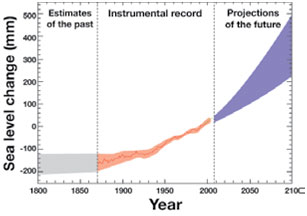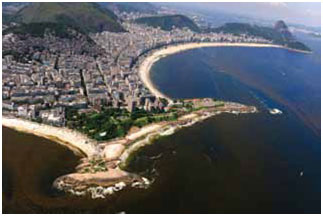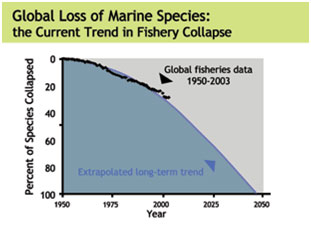-
Chapter 2. Warning Signs to Awaken Humanity > It is Worse than the Worst-Case Scenario
-
-
I. It is Worse than the Worst-Case Scenario
Our current course of climate change is worse than the worst case scenario projected by the United Nations Intergovernmental Panel on Climate Change (IPCC), with the damaging and often fatal effects already being seen through such extreme events as hurricanes, flooding, droughts and heat waves.
Even if the world reduces greenhouse gas emissions, the planet will take time to recover from the gases already in the atmosphere.
This is why it is necessary to focus on short-lived gases, namely methane. Methane traps at least 72 times more heat than CO2, averaged over a 20-year period. Methane’s biggest source is the livestock industry, which is indeed one of the top causes of global warming that must be stopped.
But first, please allow me to share just some of the latest evidence of the impacts of climate change on humans’ and animals’ lives.
Arctic and Antarctic Ice Melts
Arctic Meltdown
The Arctic, or North Pole, may be ice-free by 2012, 70 years ahead of IPCC estimations. Without the protective ice to reflect sunlight, 90 percent of the sun’s heat can enter the open water, thus accelerating global warming.16
The change in Arctic ice cover is dramatic, with the climatologists saying that only 10 percent now is older and thick ice, while over 90 percent is newly formed and thin.17
The “Feedback Loop” and Runaway Global Warming
If the seawater is warmer, then the ice will be melted quicker. And once the ice has melted, there’s no reflection of the heat back into space. Therefore, the heat will melt the ice as well and warm the water further. And both will help each other to melt more ice and heat up more the planet. You see the devil’s cycle.
That’s why the scientists could not predict it very well before, but they are very vigilant right now. They’re keeping a good eye on the situation. It’s just that we don’t do things fast enough.18

Credit: National Snow and Ice Data center, http://nsidc.org/ arcticseaicenews/index.html
Greenland and the Antarctic Ice Melts
As the massive ice sheets of Greenland and the Antarctic continue to melt as well, catastrophic sea-level rise and stronger storms are expected to follow. If the entire West Antarctic sheet melts, global average sea levels would rise at least by 3.3, 3.5 meters (10.8—11.8 feet),19 affecting over 3.2 billion people—that is half of the world population—who live within 200 miles of coastlines.
The US scientists from the National Snow and Ice Data Center now say that if all of Antarctica were to melt, the sea level could rise to a much higher level than expected, some say even up to 70 meters (230 feet), which means more deadly to all lives on Earth.20
• Sinking Land and Climate Refugees
Due to rising sea levels, islands are sinking as we speak, with Tuvalu, Tonga and some 40 other island nations having to plan their whole country’s migration.
A report from the International Organization for Migration stated that there may be 200-million, or even up to one-billion people who will be climate refugees by 2050, or within our lifetime.21 These are people who must leave their island or coastal homes due to rising sea levels or permafrost melts that cause entire communities or nations to sink and collapse.22
(Please see Appendix 1 for data on sea level rise and its world-wide effects.)
Sea-Level Rise Projections

Credit: IPCC, Fourth Assessment Report, 111, figure 1.
Methane Hydrate: a Ticking Time Bomb
Another Arctic change is the thawing of permafrost, a normally frozen layer of earth containing methane stores [methane hydrate]. The thawing of this layer in recent years has caused methane to be released, with atmospheric levels that have risen sharply since 2004.23
Further global warming beyond a two-degree Celsius rise could cause billions of tons more of methane [hydrate from the bottom of the ocean] to be released into the atmosphere, leading to mass extinctions of life on this planet.
“A temperature increase of merely a few degrees would
cause these gases to volatilize and ‘burp’ into the
atmosphere, which would further raise temperatures,
which would release yet more methane, heating the
Earth and seas further, and so on. There’s 400 gigatons
of methane locked in the frozen arctic tundra-enough to
start this chain reaction… Once triggered, this cycle could
result in runaway global warming.” 24
—Geologist John Atcheson
It’s not only the water rising that we are worried about; it’s the gas, the hydrogen sulfide, and the methane, and all kinds of gases in the ocean.25 And also it will melt more ice if the methane is coming out from the permafrost, etc., and from the ocean as well and from all the livestock, animal raising. It keeps adding together, and it would stay in the atmosphere for a long time.
At the point of no return that would be rolling downhill then; no change can be taken place anymore. Nothing can help anymore at that time. And there may be nobody who survives, or maybe very little.
Once the planet is destroyed, it will look like Mars, un-inhabitable. And it takes millions of years, sometimes hundreds of millions of years until any planet recovers, if it recovers at all.
The quicker we change, the better, and then we can halt
the climate change. And we can restore the planet very
quickly, in no time, but if we don’t, then the planet will
also be destroyed quickly and in no time.
Glacial Retreat and Water Shortages
Effects of Glacial Retreat
Most of the planet’s glaciers will be gone within a few decades, jeopardizing the survival of more than two billion people. One billion of these people will suffer the effects of the Himalayan glacier retreats, which have been occurring at a pace more rapid than anywhere in the world, with two-thirds of the region’s more than 18,000 glaciers receding.26 The initial effects of glacier melt are destructive floods and landslides. As the glacial ice retreat continues, reduced rainfall, devastating droughts and water shortages are the result.27
The Dire Condition of the World’s Glaciers
In the state of Montana, [U.S.A.], the famous glaciers of Glacier National Park are now expected to disappear within a decade.28 The Colorado River [which relies on snow pack,] which supplies water to seven Western states, is going dry.29
Peru is home to 70% of the entire range of Andean glaciers, with peaks that supply the country’s people with both water and hydroelectric power. These are all expected to disappear by 2015, just a few more years.30
(Please see Appendix 2 for more information on global glacial retreat.)
Overfishing, Dead Zones and Ocean Acidification
The US-based Pew Commission found that overfishing is the greatest threat to marine ecosystems, followed by agricultural runoff, including livestock manure and fertilizers used on animal feed crops.31
Climate change is creating areas of sea known as dead zones, which now number more than 400. These [dead zones] arise due to fertilizer runoff largely from livestock, contributing to the lack of oxygen which is necessary to support life.32

Waters polluted with red tide that causes dead zones
at Copacabana beach, Rio de Janeiro, Brazil.

Data source: B.Worm et al,“Accelerating Loss of Ocean Species
Threatens Human Well-being”, Science, November 3 2006,
www.compassonline.org/pdf_files/WormEtAlSciencePR.pdf
Scientists estimate that more than 90% of the oceans’ big fish have disappeared over the last 50 years due to commercial fishing.33
They warned that at the present rate of fishing, there will be a global collapse of all species being fished by 2050 and say that recovery efforts need to be started immediately.34
The lack of certain fish has contributed to higher ocean acidity, which in turn, reduces the capacity of the ocean to absorb CO2.
The whales and dolphins are thus being driven from the ocean as conditions worsen; it is suffocating them. Sometimes hundreds at a time, they’re dying on the beach because they cannot tolerate this toxic condition in the seawater anymore.35
Extreme Weather Conditions
The past decade has twice, at least, seen the hottest average annual temperatures ever recorded in our planet’s history. In 2003, a record heat wave hit Europe, claiming tens of thousands of lives. Heat waves also preceded the worst wildfires ever in Australia’s history.36
Puebla State [in Mexico] has seen increased forest fires over the past few years; rainfall decreased by 200 liters per square meter; [there has been an] increase in average annual temperatures to 17.5 degrees Celsius. The winter temperatures are now also above normal.
In the past five years [2003-2007], Peru had at least three extreme temperature events and floods affecting more than 500,000 people. Within just 30 years, floods increased by more than 60%, and mudflows increased by 400%.37 [Peruvian] President Garcia declared a state of emergency in 2009 due to climate change-related, severe cold and freezing conditions in the southern Andes that caused the death of nearly 250 children, and sickened many others.38
(Please see Appendix 3 for updated data on extreme global weather conditions.)
"Climate is defined not simply as average temperature
and precipitation but also by the type, frequency and
intensity of weather events. Human-induced climate
change has the potential to alter the prevalence and
severity of extremes such as heat waves, cold waves,
storms, floods and droughts." 39
—The United States Environmental Protection Agency
Increased Frequency of Natural Disasters
Drought, Desertification and Wildfires
According to the United Nations, desertification, which often results from felling too many trees and damage that occurs from such activities as cattle grazing, is affecting the well-being of more than 1.2-billion people in more than 100 countries at risk.40
Precious fresh water supplies are also drying up, such as aquifers under the major cities of Beijing, Delhi, Bangkok and dozens of other regions such as the Midwestern United States, while the Rivers Ganges, Jordan, Nile and Yangtze have been reduced to a trickle for much of the year.
In China’s worst drought in five decades [in 2009], vital crops were lost in at least 12 northern provinces, costing the nation billions of US dollars in drought relief to farmers with losses.41
In 2009, in Nepal and Australia, wildfires were severely intensified by drought conditions.42 In Africa, people in Somalia, Ethiopia and Sudan, to name just a few, have been crippled by drought.
Researchers say that the US West is facing a devastating drought crisis as snows from mountains are releasing vast reservoirs of water.
(Please see Appendix 4 for information on major global drought and wildfire disasters.)
Increasing Frequency of Storms and Floods
The intensity and duration of hurricanes and tropical storms have been noted to increase by 100% over the past 30 years, which scientists at the Massachusetts Institute of Technology (MIT) in the United States say is likely due to climate-related increases in ocean temperature.
According to researchers at Georgia Institute of Technology, U.S.A., worldwide the number of the most destructive Category 4 and 5 hurricanes has doubled over the past 35 years. Category 5 storms yield the highest level of destruction in major cities. Their intensity and duration have also increased by 75% since the 1970s.
One of these storms, whose effects can still be seen and felt, was the 2005 Hurricane Katrina, which devastated, especially, areas of New Orleans, with people who are still recovering their homes and their lives today.
The US National Oceanic and Atmospheric Administration said that for the first time on record, in 2008 six consecutive tropical cyclones made landfall on the United States’ mainland.
The North Atlantic Ocean and the Indian Ocean are the two areas with the strongest hurricane trends.
(Please see Appendix 5 for data on major global flood disasters.)

Supreme Master Ching Hai International Association’s
relief work in Pakistan, 2010

Supreme Master Ching Hai International Association’s
relief work in Haiti, 2010
Earthquakes
Scientists have discovered that earthquakes are linked to global warming because as the ice melts at the poles and beneath Greenland, pressure shifts on the Earth’s plates that could trigger movement to cause earthquakes.
One of the most tragic disasters of our time was the tsunami [resulting from an earthquake] that struck [Indonesia] in 2004 that brought so much sorrow for the Indonesian people and the people of the world.
(Please see Appendix 6 for updated data on global earthquake disasters.)
Insect Infestation
In the United States, close to a million acres of pine forest have been lost in the Rocky Mountains due to beetle infestation from global warming. Similar [situations are] also in Canada.
Deforestation
The rainforest is the lung of our planet. As the trees
are felled and plants become more exposed and dry,
they even emit carbon dioxide rather than absorb it.
This is another danger that is attacking us.
In Brazil, 90% of the land deforested since 1970 has gone toward livestock pasture or feed.43 Lush forests are being turned into barren fields at a rate of 36 football fields per minute, are being destroyed as we are speaking.44
And in the southern part of Mexico, tropical forests that once covered almost half of the State of Tabasco have been reduced to less than 10% their original size. At the same time, pastureland for livestock has increased to 60% of the State’s total area.45
Also, in countries like Argentina and Paraguay, more and more forests are felled for both livestock and soy crops. Argentina has lost 70% of her original forests.46
Indonesia has the world’s third biggest rainforest, only behind the Amazon and the Congo. Yet, [Indonesian] rainforest is being lost at an alarming rate of one football field per minute. The United Nations says that 98% of the whole forest could be gone in just 15 years.47
The Amazon rainforest alone contains more carbon dioxide than 10 years worth of all human-produced greenhouse gases. Plus, when we burn the forests, we release black carbon, which are particles of soot that trap 680 times the heat of the same amount of CO2.48
Loss of Biodiversity
Leading ecologists say that the decline of wildlife due to species extinction is so rapid that there is no modern comparison. Scientists also now predict that the Earth’s 16,000 endangered species may become extinct 100 times faster than previously thought.
“Eminent Harvard biologist Edward O. Wilson, and other
scientists, estimate that the true rate of extinction is more
like 1,000 to 10,000 times the background rate.
Between 2.7 and 270 species are erased from existence each day.” 49
—Julia Whitty
"20%-40% of the species of organisms on Earth are likely
to go extinct during the present century on the basis of
global warming alone, without even the other factors
coming into it." 50
—The Intergovernmental Panel on Climate Change
Water Shortage
Dwindling water supplies have caused escalating tensions and even conflicts to erupt as many people, including disadvantaged farmers, don’t have enough water or are struggling for their share.
There’re tens of thousands of rivers and lakes dying all over the world. People are dying from droughts. People are leaving their villages, their hometowns because they don’t have any more water to drink. 51
One billion people have no access to clean, safe water. And 1.8-million children die every year due to sickness from contaminated water. 52
Food Shortage
The United Nations announced that as of 2009 the world is now seeing the highest number of hungry people in four decades. There are 1.02-billion people with not enough food in the world. 53
In Peru, due to excessive heat and droughts over the last 12 years, 140,000 hectares of potatoes and corn have been ruined—equal to food that could have fed 11-million people.
[In Africa,] Zimbabwe, Somalia, Mauritius, Mozambique and Sudan— just to name a few—are experiencing worsened droughts that make it difficult to plant crops, thus adding to food shortages and prices rising.
Add to this desertification and deforestation that further degrade the land. Increased temperatures mean erratic rainfall—either too little or too much at a time—so we have ravaging floods that drown the crops and fires that burn the forest.
These impacts of climate change increase food insecurity and the food crisis.
(Please see Appendix 7 for data on climate change and the worldwide food shortage.)
Human Health
People Suffering from Climate Change
According to Swiss-based research, climate change is already responsible for some 315,000 deaths a year, with another 325-million people who are severely affected.54 This comes in addition to an economic loss of US$125 billion every year.55 The worst affected are developing nations in Africa, with other very threatened areas being in South Asia and small island nations.
Furthermore, 99% of the people who lose their lives due to natural disasters are in Asia.
Diseases Spread by Insects
Mosquitoes causing dengue fever are being seen for the first time in Piura [Peru], as they spread to new areas due to climate change.56
There is also increased risk of diseases such as malaria because the mosquitoes spread to higher altitudes. The United Nations is afraid that hundreds of millions of people in Africa are at risk.57
(Please see Appendix 8 for an excerpt from Six Degrees: Our Future on a Hotter Planet by Mark Lynus.)
|  |
|